Topics (Full texts)
A series of space weather phenomena from the end of October to the beginning of November 2021
1. Solar flare (X1.0) on October 28, 2021 and followed proton phenomenon.
The second X-class solar flare (X1.0) in Cycle 25 occurred on the solar surface at 15:35 UT on October 28, and was widely reported in the media.
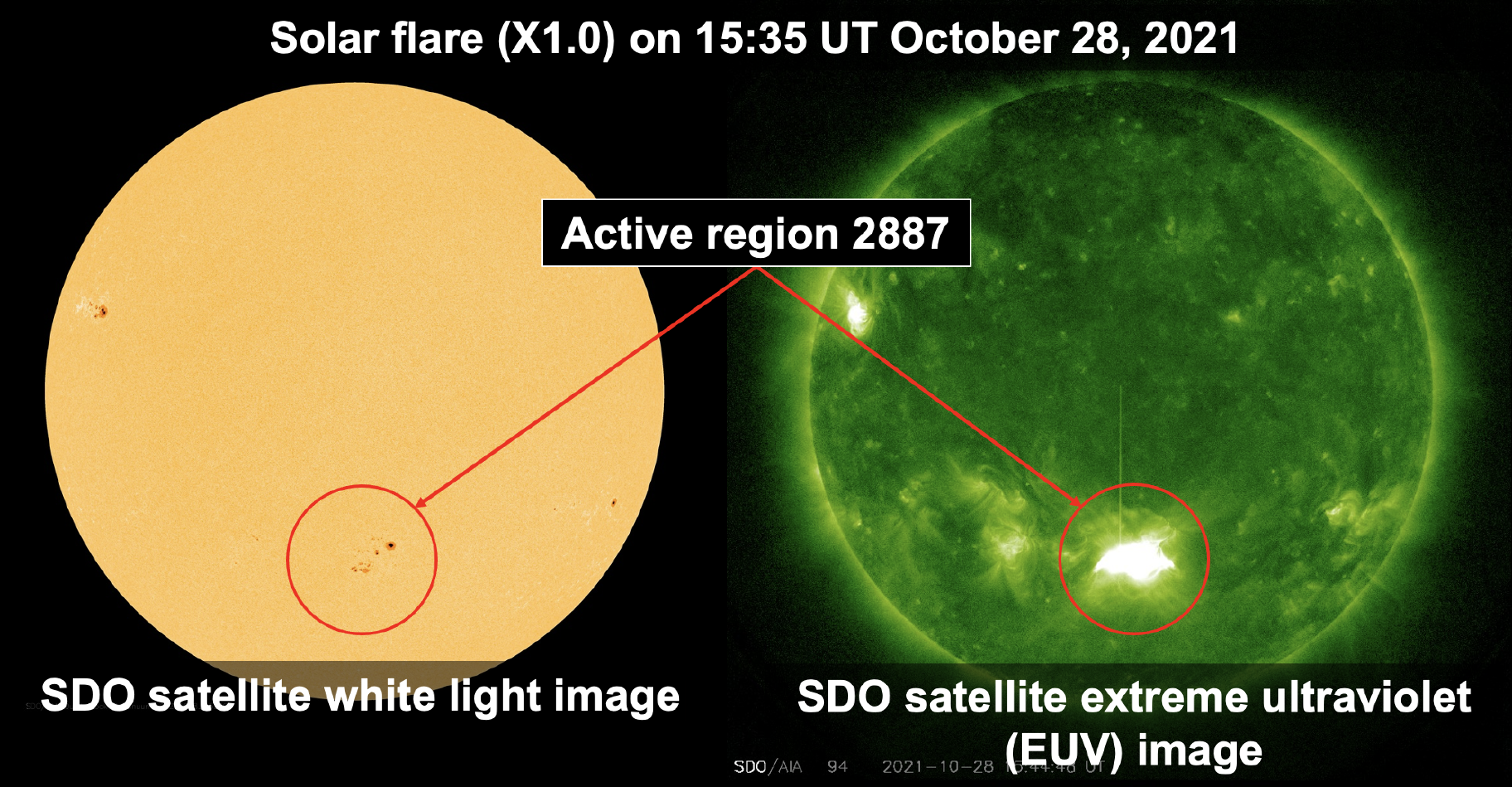
According to extreme ultraviolet (EUV) images taken with AIA aboard SDO satellite (AIA094), the X1.0 flare occurred in the active region 2887, which was located near the central meridian of the solar mid-latitudes in the southern hemisphere (S28W01).
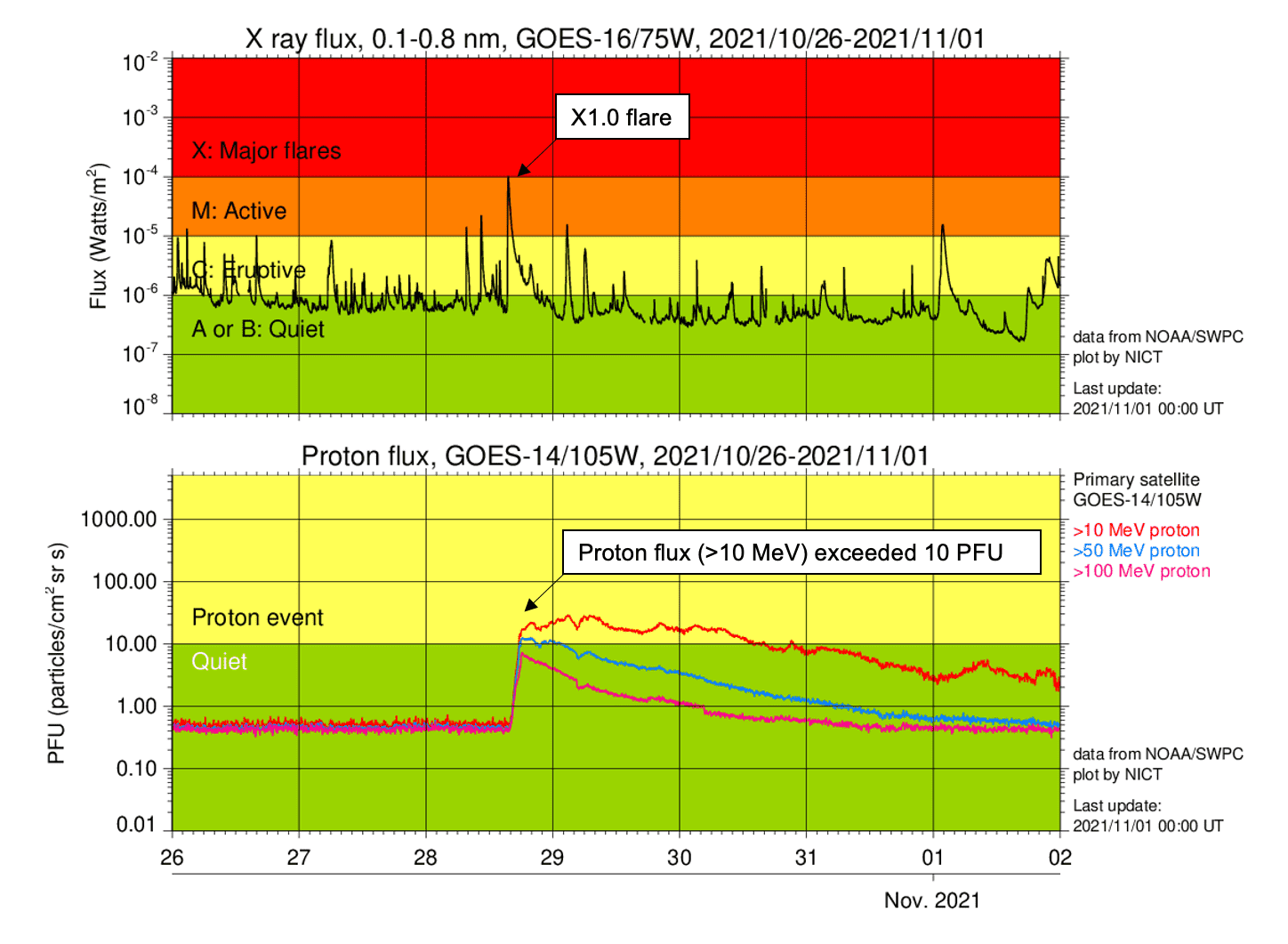
The GOES satellite observed that proton flux at energies greater than 10 MeV started to increase at around 16:00 UT on October 28, and exceeded 10 PFU at 17:40 UT on October 28 (proton event began) in the geostationary orbit. The proton flux reached the maximum of 29.0 PFU at 2:50 UT on October 29, and then it gradually decreased to below 10 PFU at 16:10 UT on October 30 (end of the event).
Coronagraph images from the SOHO and STEREO spacecraft show a coronal mass ejection (CME) toward the Earth associated with the flare. According to DSCOVR solar wind observations, the CME arrived at Earth on October 31, but did not have a significant effect on the Earth's magnetosphere and ionosphere. It is possible that the CME slowed down greatly during interplanetary propagation.
2. LDE Solar flare (M1.7) on November 2, 2021 and its effect on the earth's magnetosphere and ionosphere.
At 3:01 UT on November 2, an LDE (long duration event) flare of M1.7 occurred on the solar surface.
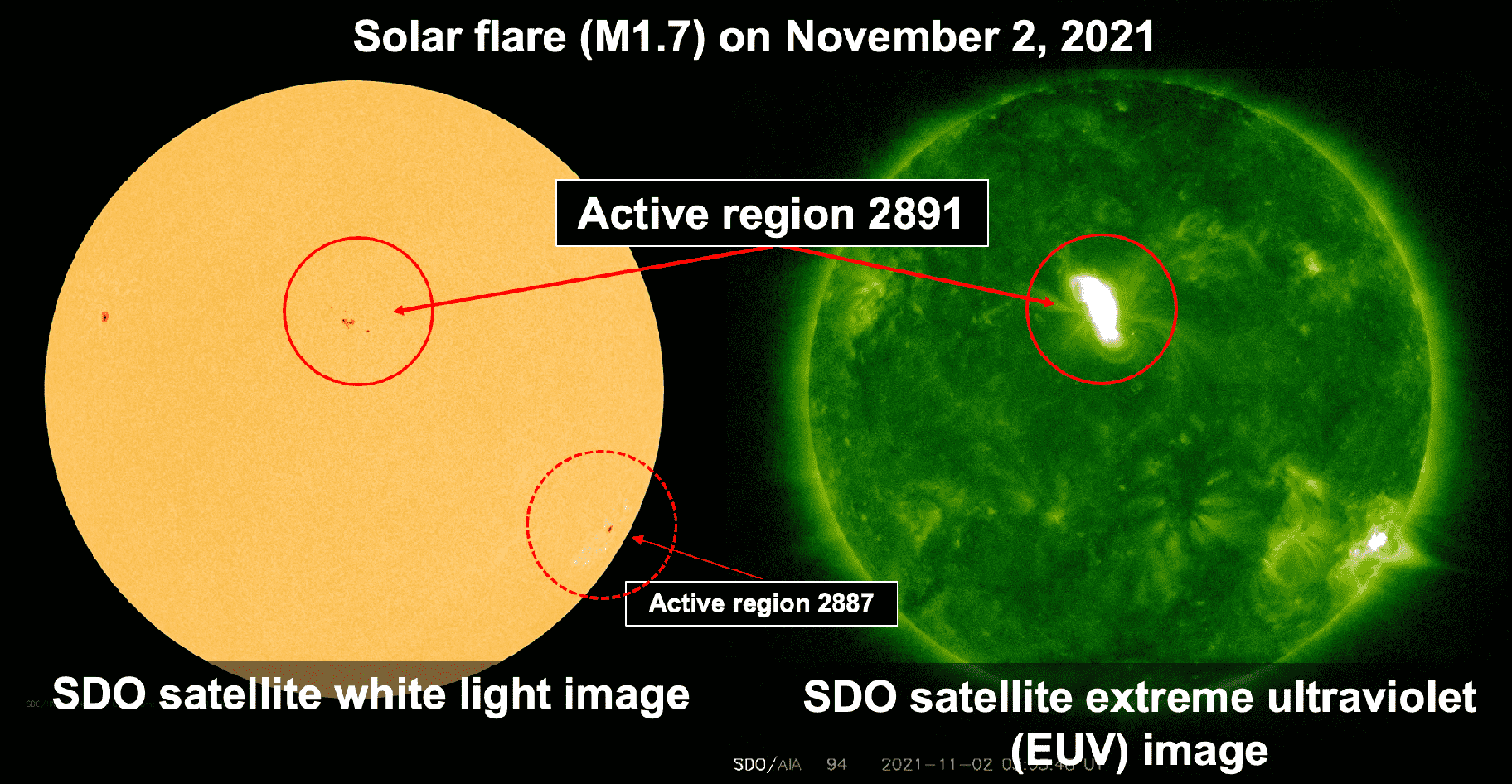
According to the SDO EUV images (AIA094), this M-class flare occurred in the active region 2891 (N16E03) which was located almost in the center of the solar disc at that time. It was observed that the active region 2887 (S27W64), which generated the X-class flare on October 28, has already moved to the west side of the solar surface due to the rotation of the Sun, and is continuously causing three LDE flares, M1.5 (01:45 UT on November 1), C1.3 (18:01 UT) and C4.0 (21:33 UT).

According to the coronagraph images of LASCO/SOHO, a full-halo type CME was occurred around 3:00 UT on November 2 with the M1.7 LDE flare at 3:01 UT. According to the solar coronagraph images of SECCHI COR2/STEREO, it was observed to expand and propagate toward the Earth at a speed of 1000 km/s. In addition, from these images, it was confirmed that CMEs associated with the flares had occurred on November 1, the previous day.
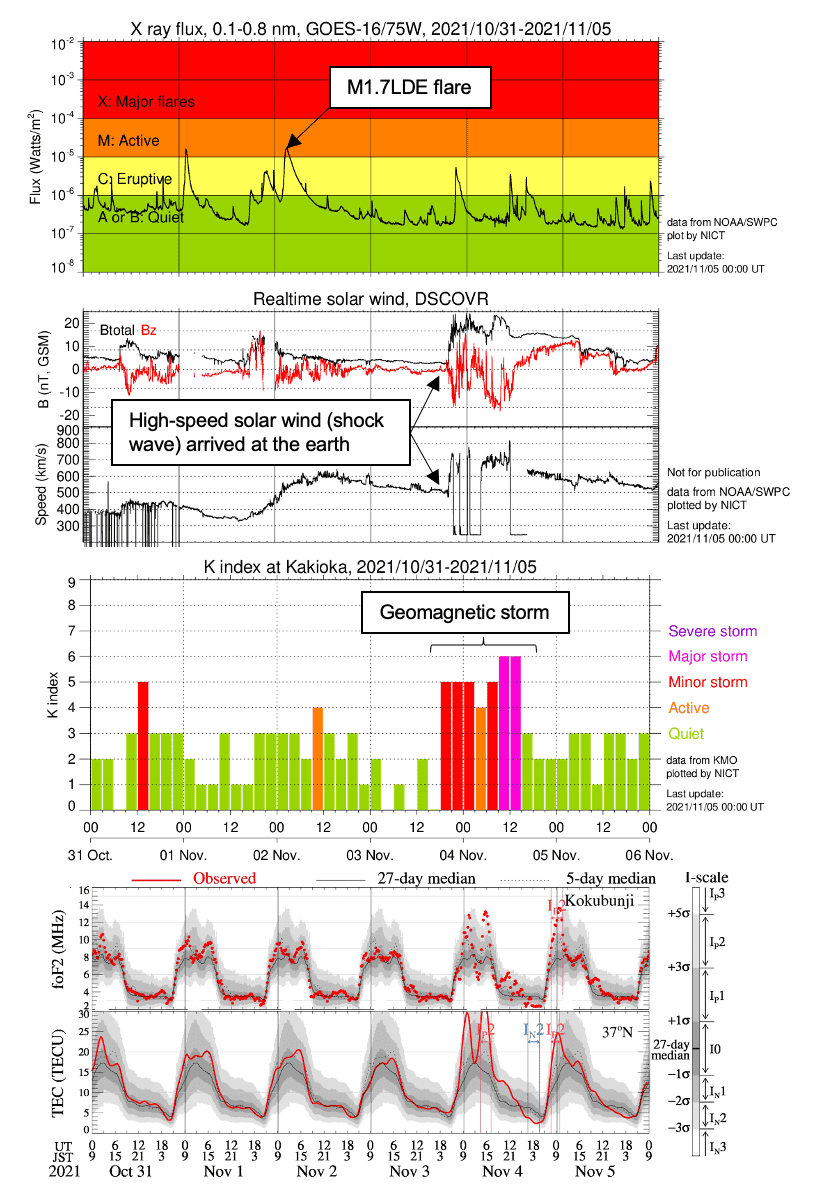
According to the DSCOVR satellite, a shock wave of the solar wind accompanied by the CMEs was observed at 19:29 UT on November 3. The solar wind velocity increased from 472 km/s to a maximum of 741 km/s and the magnetic field strength increased from 12 nT to a maximum of 23 nT. The north-south component of the magnetic field was in a very strong southward direction at around -18 nT at one time. It is estimated that the CMEs, which occurred several times from November 1 to 2, came together to the Earth because they were merged during the propagation of interplanetary space.
According to Kakioka Magnetic Observatory of Japan Meteorological Agency, a geomagnetic storm with a sudden commencement started at 19:41 UT on November 3. The maximum range of the horizontal component of the geomagnetic field was about 215 nT, and it ended at around 19:41 UT on November 5.
NICT’s Ionosonde observation at Kokubunji, Tokyo, and ionospheric total electron content (TEC) observations using the Geographical Survey Institute GEONET revealed IP2 ionospheric positive storms during the daytime on November 4 and 5, and an IN2 ionospheric negative storm during the nighttime on November 4. These ionospheric storms would be induced by the geomagnetic storms from November 3 to 5.
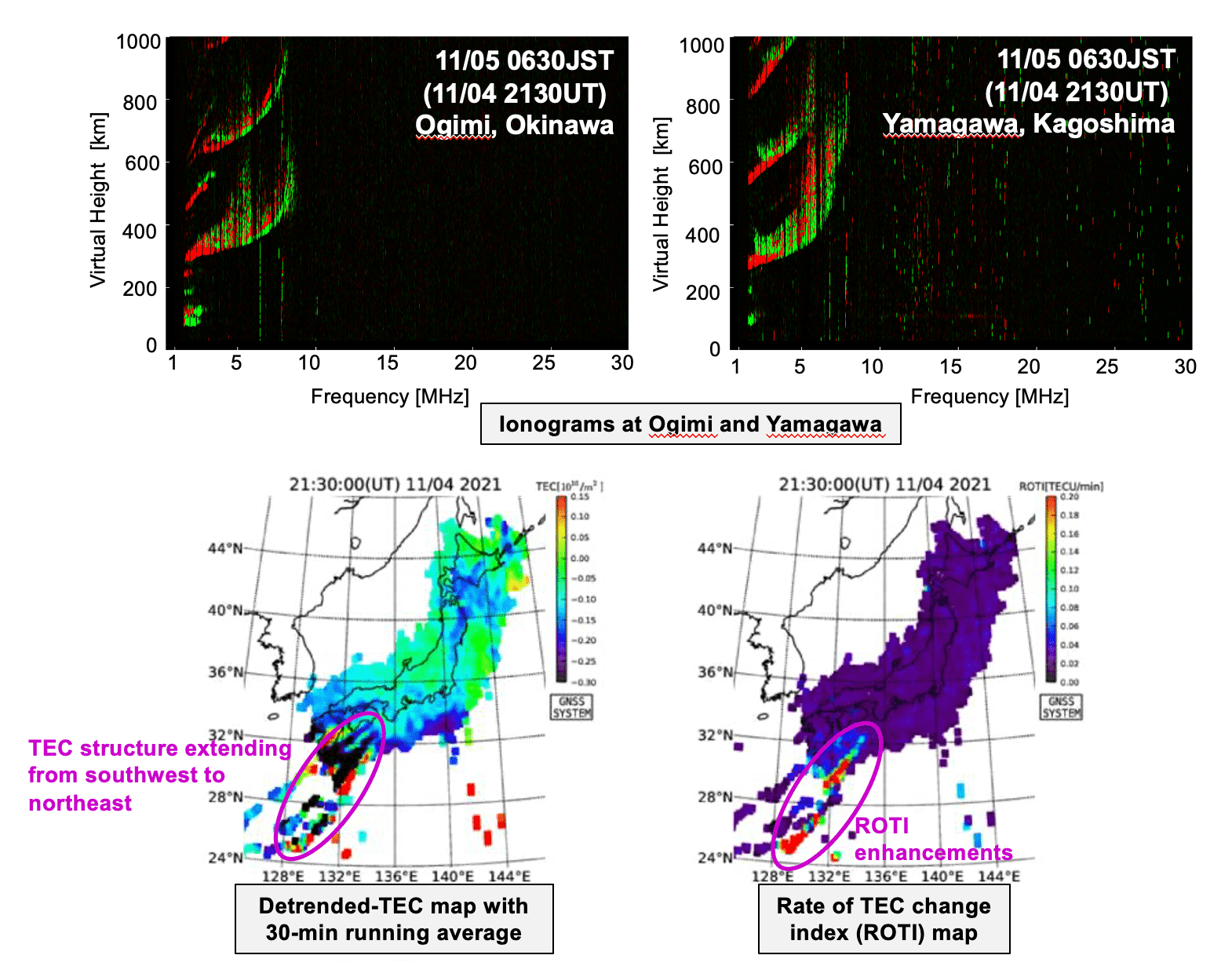
Ionosonde at Ogimi in Okinawa and Yamagawa in Kagoshima observed scattering ionospheric echoes during early morning of November 5. The detrended TEC map with 30-min running average shows a structure extending from southwest to northwest. The structure corresponds to enhancements of Rate of TEC change index (ROTI) map, which indicates ionospheric irregularity. The ionospheric irregularity might be caused by plasma bubbles. Similar phenomena occurred in the evening of November 1 according to the observations of Ogimi ionosonde and GEONET-TEC.